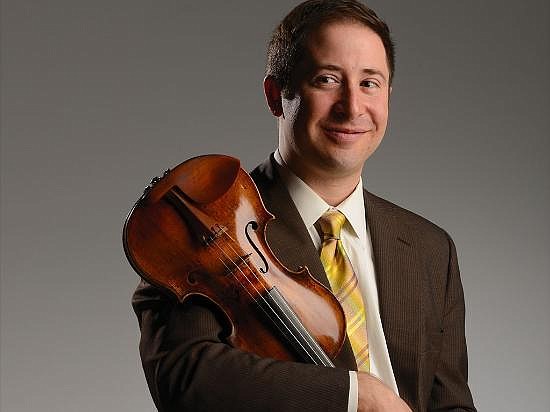- November 23, 2024
-
-
Loading

Loading

After opening the season with several concerts of chamber music, the Sarasota Orchestra returned to its strongest suit, the Masterworks Series, with a concert that allowed every facet of its jewel to sparkle.
These days, many orchestras feature their own players in solo roles outside the brief passages in the repertoire, and the Sarasota Orchestra continued this tradition in fine fashion by featuring Concertmaster Daniel Jordan as soloist in Mendelssohn’s Violin Concerto. One of the most familiar concerti in the repertoire, it puts big demands on the soloist, especially since the three movements are usually performed without pause.
After a somewhat shaky start, Jordan settled into a solid musical performance — especially in the lyrical second movement — and seemed to enjoy the pyrotechnics of the finale. Unfortunately, some of his sound didn’t project well, partially because of the spotty Van Wezel acoustics, and partially because Jordan’s sound is not of a take-no-prisoners quality, but rather is more refined and gentle, quite similar to that of the late Joseph Silverstein, longtime concertmaster of the Boston Symphony and Sarasota Music Festival Faculty.
Speaking of taking no prisoners, that is exactly what occurred when the orchestra gave its rafter-rousing performance of Stravinsky’s “Rite of Spring” after intermission.
Those who consider the “Rite of Spring” modern music and organized cacophony, need to be reminded that this piece is 103 years old. It might have been new then, with its continuing complexity of rhythms, meter changes and cross rhythms that almost outpace the fact that it pushes most instruments — and players — to the limits of their abilities, including the conductor. But these days, the “Rite” as it’s usually referred to, is in the repertoire of almost every professional orchestra — and even those of university and conservatory orchestras.
Originally a ballet, this music can be considered a journey in orchestral color, an exercise in rhythm and a showcase for the modern symphony orchestra. There were 105 players on the stage Friday, all giving their utmost in this great work. The “Rite” was performed by this orchestra several seasons ago, and this performance gives even more indication of the increasing quality of this ensemble. The changes are most noticeable in the increased quality of the strings, and the consistency of the already superb wind sections. Several personnel changes have been made this season, as players migrate from this orchestra to larger orchestras around the country, and these changes certainly work.
Anu Tali was at her peak in not only guiding the players through this prickly score, but also in controlling and contouring it as a true dramatic work. From its quiet opening through the various explosions of brass, winds and percussion, the orchestra played with a clarity and balance that truly showcases the excellence of these musicians.
The “Rite” is rife with treacherous solo passages in almost every section, and each one was played to perfection. At the end, Tali gave each solo player and section well-earned individual bows, to a continuing ovation from the excited and pleased audience.
The concert opened with a rousing performance of Beethoven’s Egmont Overture, again emphasizing the increased sonority and excellence of the string sections.
And at the end of the evening, Tali addressed the audience, saying, “After this piece, we have no encore. Stravinsky has said it all.”
And indeed he has, because it’s now mainstream, folks. And no longer modern.